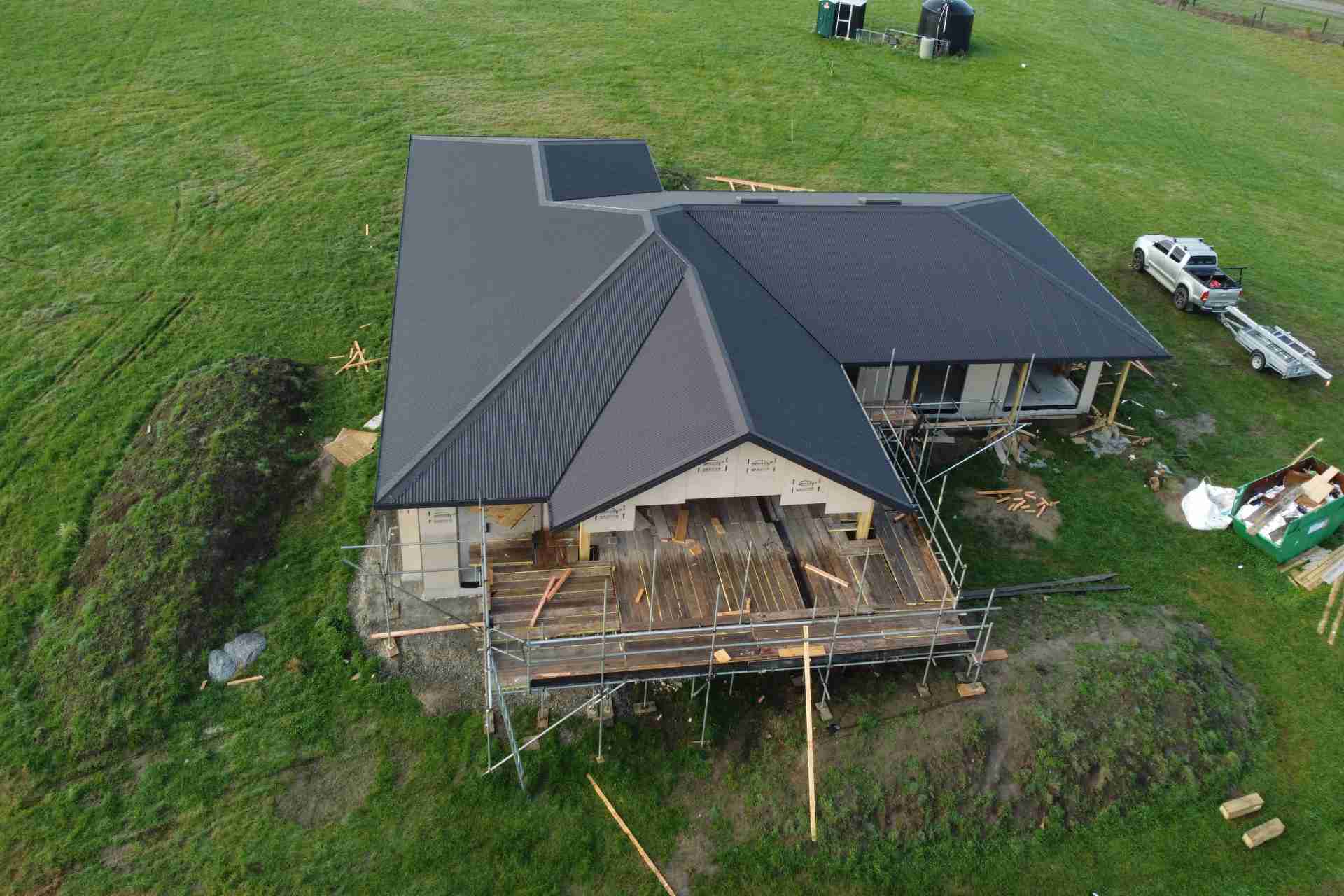
Building Beyond Style
Totem Studio Architects marked 100 years of contributing to New Zealand’s architectural history in 2022. Director Ian Cattoën-Gilbert encourages Kiwis to build their homes to reflect how they truly live, rather than chasing fleeting trends.
Ian Cattoën-Gilbert: A People-Centred Approach
As an architect, Ian’s known for working with well-known practices nationwide and has an international portfolio across a number of architectural typologies. When asked, he says he doesn’t have an applied brand; his approach is centred on people, not a fixed aesthetic.
He says he responds to each client and site uniquely. “I don’t even like to use the word ‘style’ as it preconceives an idea of knowing what you’re doing before you even do it. At times, an architect’s style can be found through repetition in their work, and that style becomes theirs, but I suggest maybe talking about it with the client first.”
Ian replaces style with response and says that many things impact how an architect tends to tackle project briefs: personal values, upbringing, cultural influences, sustainable practices, financial perspective, and the list goes on. “Lots of architects are very practical; others are more fixed in expressing something personally. I see a spectrum between artistic and practical tendencies. Your approach might delight some clients and terrify others. It’s about personal fit.”
He adds that his own design values are rooted in honesty. “I don’t like fakery or applied cosmetics,” he says. “Where possible, steel should look like steel, concrete should look like concrete, and timber should express itself naturally. If a client wants a veneer or imitation material, of course, we make it work, but I’ll always advocate for materials that speak their own language.”

Designing Homes Around Lifestyle
He says that when working in residential design, what’s really of value is what makes a home feel good. Kiwis building their dream homes might desire a showstopper that echoes the grandeur and excellence of award-winning builds so often portrayed in magazines. Still, Ian believes the real focus should be designing for both your lived and ideal lifestyle — with drama and interest following naturally.
A well-known example is the Eiffel Tower, which was initially hated and labelled an eyesore. Now a symbol of French culture, a centrepiece celebrating progress, it profoundly meets what was asked of it and conveys its site well. “It’s really invoking, and everyone is drawn to it. It’s a focal point of inspiration and enjoyment,” Ian says. “It was designed to be temporary, but imagine if it were destroyed now.”
“In workplace design, I get a lot of push-back on open plan offices. It is definitely an effective solution, but productivity should be the driver, not cutting costs from delivering a small floor area. Making open plan work is about full user understanding and buy-in; otherwise, those seated around the design meeting room table might deliver a product that their employees hate if nobody talks to the users in between. It’s about intention. It’s about process. How are you actually working?”
In designing a home, he remarks that life in a style-driven, heavily glazed house might get a bit old after a couple of months. “Houses should reflect how you live, not a desired number of bedrooms or an open-plan living room size. Sculpt the building around your lifestyle instead of trying to force a lifestyle.”

Collaboration and Creativity
Caring about client wants and needs is what makes a ‘starchitect’. A starchitect should be someone who does their job really well, and sometimes they aren’t the same thing, Ian says. Sometimes it takes work to show a client how their needs differ from the initial brief they gave. Sometimes other issues arise that prompt change, such as shortages, budgets, site conditions, and life events.
Ian also stresses that good architecture is rarely the product of a lone visionary. “It’s a team game,” he says. “You can’t always be uncompromising. You have to be willing to pivot, to work with the builder, the engineer, the client, and everyone else on-site.”
He recalls an expensive stairwell install where the answer to cost concerns wasn’t simply to build cheaper stairs, but to find creative alternatives within budget that still delivered the aspirations the client and team had for the build. “It’s about finding other solutions. In projects, especially with huge teams on-site, this leads to innovation and problems solved.
“The goal is the best outcome at the end, and knowing you got through it all is what matters; that the client’s wants and needs were captured. You almost have to understand their needs more than they do. Surpassing their aspirations and going above and beyond for the client is the sign of a job well done.”
Constraints, he adds, often drive creativity. “If you panic, you end up with awkward solutions that restrict the final project. But if you embrace constraints, they force you to be more creative, and that’s when innovation happens.”
He believes the natural environment largely informs the most inspirational New Zealand architecture. Think about how cliffside baches and lush forests fill design magazines. Ian says that an emotionally connected residential architect tends to respond strongly to the climate and surroundings.
“In urban settings, there is less pull from the landscape, but that’s still a space the client will inhabit. This plot is where they’ve chosen to live. How do you map out life in this space?” He says that cool urban houses are the innovative ones on small sites. They might have found unique ways of putting joinery and furniture together, or created nooks and spaces that work specifically for how they live. “It’s about occupying the space, your space, and how you live in it.”
The future of New Zealand architecture depends on how valued architects continue to be, Ian says. “I’m optimistic, but an underappreciation of our full value is currently trending. Some people just don’t appreciate the architect’s role. Imagery is the focus now, not the project coordination or problem-solving. The truth is, architects are the glue in the middle of the project, the epicentre of all the working elements. When I think of our design teams, who aren’t we connected to?”
Advice for Aspiring Architects
When asked what advice he’d give to budding architects, Ian doesn’t hesitate. “Figure out what kind of architect you want to be: do you want to be a solo designer, or part of a bigger machine? Early in your career, you’re negotiating your values, learning where you fit, and you need to expect setbacks. But you’ve got to keep the fire in you. At its heart, architecture is about creativity and problem-solving.”









